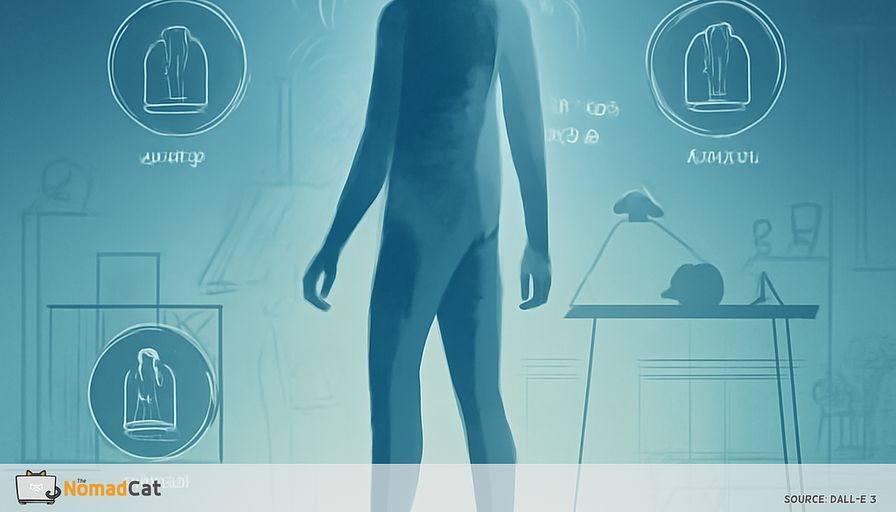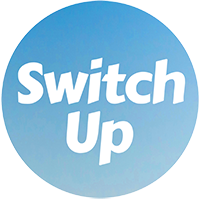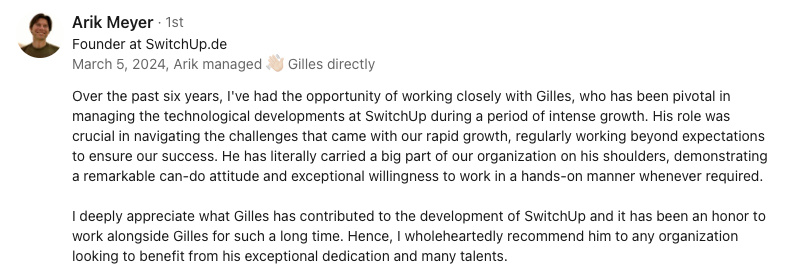Abstract:
The article emphasizes that true comfort and focus at work, especially for tech professionals and minimalists, starts with what you wear rather than just your workspace setup. It explains that clothing is a constant companion, affecting everything from posture and concentration to well-being, no matter where you work—home office, café, or co-working space. Drawing on research and real-life feedback from tech workers, it highlights the importance of breathable, stretchy fabrics and well-fitted, movement-friendly clothes for reducing tension and supporting natural movement throughout the day. The piece offers practical advice on building a minimalist, versatile wardrobe with easy-care, technical fabrics, layering strategies, and the right footwear to support posture and adaptability. Unique elements include firsthand insights from tech professionals who found improved focus and reduced discomfort by switching to ergonomic clothing, as well as the author’s personal experience dressing intentionally across different cultures and climates as a daily ritual for clarity and readiness. The article concludes that a thoughtfully chosen, minimalist wardrobe not only streamlines routines but also enhances comfort, confidence, and professional presence—making it an essential foundation for healthy, productive work in any setting.
Getting comfortable at work isn’t just about picking the right chair or having a standing desk. For people who like to keep things simple, clothing often matters most. Clothes are your constant—they follow you from your home office to a café or co-working spot. Even the best workspace setup can’t fix pants that pinch or shirts that don’t let you move. How your clothes fit, breathe, and move with you decides if you flow through your day or feel distracted and tense. And honestly, a minimalist workspace setup—like a standing desk, a simple lamp, or even a well-placed plant—can work wonders alongside the right clothes. The two go hand in hand for real ergonomic comfort.
This article looks at why clothes are so important for comfort and focus, especially in tech. There’s solid advice about picking fabrics that keep you cool, cuts that help natural movement, and ways to simplify your wardrobe and your mornings. You’ll find tips about ergonomic fabrics, building a small, flexible wardrobe, layering basics, finding the right shoes, and even how what you wear can help support your posture. Look for a minimalist starter kit and insights from people working in tech, too.
If you want to see how simple, movement-friendly clothes can help you stay comfortable and ready for anything at work, keep reading. Let’s check out what a few smart choices can do for your day.
Why clothing is the foundation of comfort for tech minimalists
Clothing as your daily interface
From first thing in the morning until your work is done, clothes are always touching your skin. Even with the best desk and chair, something like tight jeans or a snug shirt can leave you feeling uncomfortable or affect how you move. For freelance tech pros working in different spots—apartments, cafés, shared spaces—clothes are the main thing that stay the same. It’s surprising how much your comfort, concentration, and even health depend on what you wear. I’ve read research and, honestly, I’ve felt it myself: clothing can shape your posture and well-being in ways you don’t expect.
How clothing affects posture and tension
I’ve noticed that even slightly restrictive or badly fitted clothes can cause discomfort and poor posture, no matter how good your workspace is. In my experience, tight waists, stiff collars, or odd seams make you shift, hunch, or sit in strange ways—little changes that add up after hours at a computer. These annoyances pile up, steal your focus, and later cause aches. And good fabrics? They help your body stay relaxed and let you concentrate. I remember one day in Lisbon, I wore a shirt with a collar that was just a bit too stiff. By lunchtime, my neck was sore and I kept fidgeting, which made it impossible to focus on my code.
Breathability and movement: why fabric choice matters
Clothes aren’t only for looking good on a Zoom call. Fabrics that breathe and stretch help keep your body at a nice temperature, letting your muscles relax. They help long hours at your desk feel easier. Picking the right materials can mean the difference between racing through your work or overheating and getting annoyed. Let’s get into the details about fabric, fit, and comfort for tech jobs.
The science behind fabric, fit, and comfort
Stretch, breathability, and ergonomic design
From what I’ve seen (and felt), stretch fabrics and clothes made for movement really help people who sit at desks for ages. I remember testing technical pants for a week—by Friday, I had less tiredness and fewer aches than usual. Clothes that move with you, like shirts that flex instead of fighting every movement, make a difference. Stretch is important, and so is breathability.
Materials that let your skin breathe and wick away moisture, like merino wool or technical blends, keep you cool and dry. Whether you’re working in a sunny kitchen or a chilly co-working space, these fabrics help manage heat and sweat so you don’t get sticky and distracted. But comfort depends on the right fit, too.
Loose, but well-fitted clothes—not super tight or baggy—let you move naturally and make it easier to do little stretches at your desk. A just-right fit keeps you comfortable and focused, especially for tech folks glued to screens for hours. So how do you put together a wardrobe with all these perks?
Building a minimalist tech wardrobe
Creating a simple, versatile work uniform
Having a simple work uniform can make mornings much easier. Using neutral colors and pieces that match helps save brainpower for your work, not wardrobe decisions. For instance, a couple pairs of dark technical pants and some plain, comfy tops can go with almost anything. But versatility is also about movement, not just about color.
Co-founding a ready-to-wear company taught me that less really is more. I used to think I needed a closet full of options, but after seeing how a few well-chosen pieces made my own mornings smoother—and my suitcase lighter when traveling for work—I became a true believer in the minimalist approach. This make mornings easier and helps you focus on what matters.
Prioritizing stretch, flexibility, and easy care
To keep up with days that jump from home office to café or even a quick walk, look for:
- Stretch fabrics, like technical blends with a bit of stretch
- Soft seams and elastic waists
- Clothes made to move, not just look sharp
Easy upkeep is also key.
Choosing fabrics that make life easier
Easy-care fabrics—like wrinkle-resistant blends or merino—save time with less ironing and lighter travel bags. They’re quick to wash and dry, so your wardrobe is always ready with little fuss. Layering is another good way to stay comfy and prepared.
Layering and fabric choices for all environments
Mastering layering for comfort and adaptability
Layering is a top trick for minimalists. A basic system covers almost every situation:
1. Base layer: a tee or tank that moves sweat away
2. Mid-layer: lightweight sweater or pullover for warmth
3. Outer layer: jacket or cardigan for meetings or cold rooms
With this, you’ll stay comfortable and tidy in every work setup. Fabric matters in every layer.
Picking the right fabric for every layer
Choose fabrics for each layer that help you stay comfortable:
- Cotton: comfy and airy, but doesn’t dry quickly
- Merino wool: deals with temperature shifts and keeps away odors
- Technical blends: wick sweat, dry fast, and are easy to care for
A smart, small wardrobe will handle nearly any day.
Keeping it compact: the capsule wardrobe approach
A capsule wardrobe of 15 to 25 items usually handles work, travel, and downtime—if every piece is versatile and comfortable. You stay ready for home days, co-working, or trips—no overstuffed closets. I once met a digital nomad in Berlin who told me his 18-piece wardrobe let him pack for a month-long trip in under ten minutes, and he never felt underdressed or uncomfortable. In fact, a recent study found that people with capsule wardrobes reported 40% less decision fatigue in the mornings. But don’t forget your feet. Shoes count too.
Footwear choices and posture for tech professionals
How footwear shapes your posture and comfort
Most people don’t focus on shoes when working from home or cafés, but shoes can quietly change your comfort. Even while sitting most of the time, what you wear (or don’t wear) on your feet affects your posture. Some tech workers try minimalist shoes or going barefoot for a bit to get more natural movement during those long desk stints.
Minimalist shoes or barefoot time might strengthen foot muscles or help natural alignment, but results differ and not everyone benefits the same. For many, supportive shoes are safest—especially if you’re standing or walking a lot at work. Key is to look at what works for you and make any changes slowly.
Experts suggest most people wear supportive shoes, especially for busy or active workdays. If you want to try being barefoot at work, start with short periods, watch out for any soreness, and remember personal health needs. Think about your activities, the floor type, and your own comfort before switching shoes.
Choosing the right option for your workday
If you use a standing desk or take lots of steps, supportive, closed shoes with flexible soles are usually best. At home, short barefoot spells can be nice, but check for fatigue or aches—especially if the floor is hard.
Minimalist shoes offer a nice middle path. They give some support but let your feet move more freely. Look for wide toe boxes and thin, bendy soles.
Of course, shoes are just a small part of comfort. Good shoes help, but regular movement and a smart workspace still matter most. The whole setup counts, so let’s look at how clothes can help you move better all day.
Clothing that supports movement throughout the workday
How the right clothes make movement easy
From my own experience, your outfit can either help or stop you from moving during long work hours. Too-tight or stiff clothes make quick stretches or stands difficult. Stretchy fabrics and relaxed fits encourage more movement. The difference is obvious: design can make movement possible or awkward at your desk.
People who work in stretch or athleisure clothes move more and feel less tired, studies say. This matters for tech workers who rely on simple stretches to break up long computer sessions. Relaxed rules for dress at home or at work also help—people feel freer to do a quick stretch, stand, or move without worrying about their outfit.
If you’re working from a home or a flexible place, you can do at-desk stretches or quick movement breaks—no need to change. Everyday comfy clothes make it much easier to fit movement into the routine and stay focused. So how should you pick clothes that make it easier to move?
Tips for choosing movement-friendly work clothes
Good clothes do more than look good; they support healthy movement. Look for:
- Stretch panels at key spots—knees, hips, elbows
- Elastic waistbands
- Soft, non-scratchy seams
These features make it easy to adjust, stretch, or stand as needed. Adding a movement habit matters, too.
A simple stretch, shoulder roll, or standing every hour is easier if your clothes move with you. The best clothes let you change positions anytime, anywhere—no fuss. In shared spaces, versatility is even more important.
For people using coworking spaces or open offices, pick professional-looking clothes that move like activewear. This way, you stay comfortable and can move without embarrassment. Feedback from digital nomads using stretch shirts and technical pants shows these blend in but still offer complete freedom. One digital nomad I met in Porto told me that switching to stretch shirts meant he could do a quick yoga pose between calls without anyone noticing.
Taking care of your wardrobe is as important as picking the right pieces. Well-chosen, movement-friendly clothes make comfort and flexibility normal, no matter where you are.
Caring for your minimalist wardrobe and dressing with intention
Laundry made simple for tech minimalists
Washing your clothes only when they’re dirty or smelly keeps them fresh for longer. Technical blends and merino wool help here—they keep away odors and dry quickly, so you wear them more between washes. This habit saves water, energy, and helps your favorites last longer.
On laundry day, some small changes help a lot. Use cold water and air dry when possible—it’s good for the clothes and cuts power use, especially with technical blends.
Try spot-cleaning and waiting until you have a full load before washing. Pick wrinkle-resistant, easy-care fabrics so you spend less time ironing or worrying about laundry.
- Wash only when needed
- Use cold water and air dry
- Spot clean and wait for a full load
- Choose easy-care fabrics to save time
Dressing with purpose is the next step in getting the most from your wardrobe.
Dressing with intention as a daily reset
Taking a moment each morning to pick comfortable, intentional clothes is a simple form of self-care. Mindful dressing can boost comfort and body awareness and help you feel ready and grounded for work.
What you wear might affect your focus and confidence. Research suggests your outfit isn’t just about feeling good physically—it can set your mindset and performance, too. For example, putting on a favorite work shirt or top can set a productive tone.
I remember one morning in Beijing, I was running late and almost grabbed an old, scratchy shirt out of habit. Instead, I took an extra minute to pick my softest merino tee and a pair of stretch pants. That day, I felt more focused and less irritable, even when my code kept breaking. It’s a small thing, but it made a big difference.
Wearing clothes that fit your style and work helps cut down on distractions and gives you more control over your day—especially if you work on your own. This way you feel both comfortable and prepared.
Having worked across cultures and climates—from Beijing to Berlin to Lisbon—I’ve learned that dressing intentionally in the morning, even while working from home, is a quiet but important ritual for staying clear and focused. Here’s a simple starter kit and some stories from tech professionals.
Real-world starter kit and feedback for the minimalist tech wardrobe
Building your minimalist tech wardrobe: a practical checklist
A comfy tech wardrobe doesn’t need to be big. With a few right items, you can cover work, travel, and downtime. A good starter kit:
- 2–3 pairs of stretch pants (technical blends or merino)
- 3–5 breathable tops in cotton or merino
- 1–2 layering pieces like cardigans or blazers
- 1 versatile jacket for weather or trips
- 2 pairs of supportive or minimalist shoes
- Some technical-fabric socks and undergarments
Pick neutral colors and easy-care materials so all the pieces work together. This small collection handles most days—no crowded closet needed.
Simple tips for a flexible, travel-ready wardrobe
Stick to neutral colors for flexibility and a no-stress look. Choose quick-drying, wrinkle-resistant fabrics to save time and look sharp, even on busy days.
It’s good to have at least one professional top or layer—like a fitted shirt or blazer—for meetings and calls. This keeps you ready for work stuff, even at a café or while traveling.
Always ready for work: the professional piece
One comfortable, camera-ready top or outer layer is an easy way to prep for surprise meetings or calls. Throwing on a technical blazer or crisp, no-wrinkle shirt can boost confidence and polish your look without sacrificing comfort.
So how does all this work for real people? Here’s what people in tech say.
Real feedback and lessons from the tech community
A lot of software engineers and digital nomads say moving to temperature-regulating shirts and stretch pants helped them focus, stay less distracted, and improved their posture during long computer work. For instance, a software engineer mentioned “less distraction from discomfort” and “better focus during long coding sessions” when switching to a temperature-regulating shirt. Others noticed stretch pants made it easier to stay comfortable for hours, even while traveling, with one product manager saying they had “less back and shoulder tension” because movement wasn’t restricted.
One tech lead told me that after switching to a minimalist wardrobe, he cut his morning routine by 15 minutes and felt less stressed about what to wear—he said, “Decision fatigue just disappeared. I can pack for a week-long trip in five minutes, and I never worry about looking out of place.” That’s a real benefit you can feel.
Having just a few well-made, flexible pieces often pays off in feeling good, confident, and not wasting energy choosing outfits. The feedback is clear: it’s easier to fit in anywhere and still look professional with just a handful of smart pieces.
Minimalist, ergonomic style isn’t about losing out on style or professionalism—it’s about keeping life simple and comfy, wherever you work. Stories from the tech community show that a small, intentional wardrobe helps your well-being and your professional image, at home, in cafés, or co-working spaces.
Minimalist, ergonomic clothing is a solid base for healthy, focused work—wherever your tech journey takes you.
Comfort at work really does start with the clothes you wear. Stretchy fabrics, just-right fits, and easy-care materials help you move freely and stay focused whether at home or moving around. A minimalist wardrobe made of versatile, breathable pieces makes mornings faster and distractions fewer. It’s about choosing clothes that work with your body, supporting good posture, and helping you keep moving all day. Good shoes and smart layers mean you’re always ready, and taking care of these pieces is simple. Honestly, I’m still searching for the perfect pair of pants that never wrinkle and always fit—maybe one day I’ll find them, but until then, a few smart choices keep my workdays smoother (and my suitcase a lot lighter).














